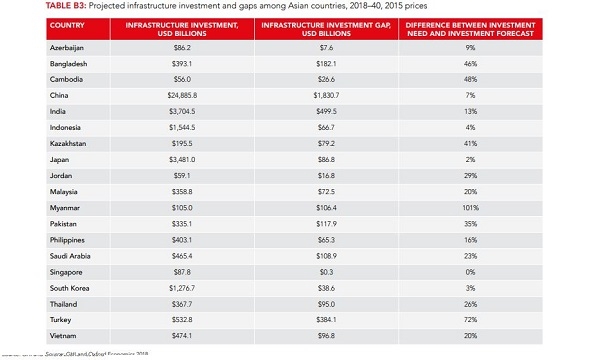
Singapore's infrastructure gap expected to be one of the world's smallest by 2040
By then, the country’s infrastructure gap is tipped to hit US$400m compared to the global gap of $19t.
Singapore is projected to have one of the smallest infrastructure gaps in the world at US$400m by 2040 following expectations that the government will invest US$87.8b between 2018-2040, according to a report by the Association of Chartered Certified Accountants (ACCA).
The report identified Singapore, Japan and Canada as role-models in bridging the difference between the necessary investment infrastructure and the resources available to plug the gap, with the headline figure standing at 0% for Singapore and only 2% for the other two countries.
“Singapore is a top performer when it comes to good practices and provisions for infrastructure, thanks to continuous efforts from the government to address current and future needs of the country while remaining fiscally sustainable,” Reuter Chua, country head, ACCA Singapore said in a statement. Chua cited the establishment of Infrastructure Asia to connect infrastructure stakeholders, enable information exchange, facilitate infrastructure investment and financing amongst other initiatives.
Also read: Construction industry to grow 3.3% in 2019-2028 amidst transport megaproject boom
In contrast, the ACCA identified Mexico, Brazil and Myanmar as global laggers. Mexico’s government is called to invest US$699.1b to address its 106% infrastructure gap, whilst Brazil and Myanmar still needs to shell out US$1528.44b and US$144.35b, respectively, to close their 79% and 101% infrastructure gaps.
The global infrastructure investment gap is expected to grow US$149t by 2040 after hitting over US$400b in 2018. On a regional basis,. Asian economies funded the largest financial infrastructure investment at around US$1.3t in 2015, with investment representing 5.1% of regional GDP. Africa trailed at second place with investment as a share of GDP hitting 4.3% over the same period whilst the more mature economies of Europe and America dedicated lower levels of funding to infrastructure investment as a share of GDP at 2.0% and 1.7% respectively.
Survey respondents across 118 countries identified lack of political leadership, corruption, and planning and regulatory barriers as major barriers to meeting infrastructure needs.
To bridge the gap, reports by the McKinsey Global Institute estimated that the world will need to invest US$4.4t annually.
























 Advertise
Advertise






